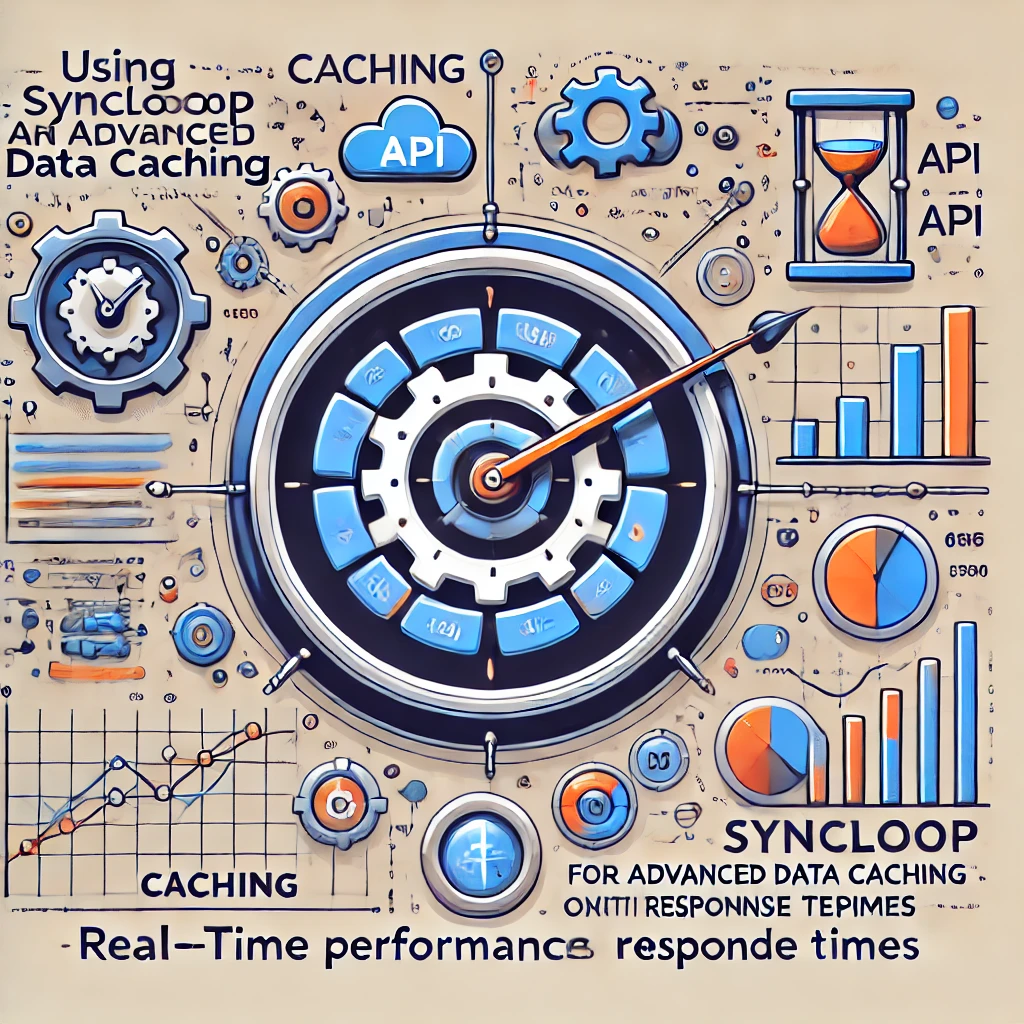Using Syncloop for Advanced Data Caching in API Responses

Syncloop offers comprehensive tools for implementing advanced data caching in API workflows. With features like dynamic cache policies, cache invalidation rules, and real-time monitoring, Syncloop simplifies the caching process and ensures efficiency. This blog explores how Syncloop enables advanced caching for API responses and shares best practices for implementation.
Why Caching is Essential for APIs
Caching API responses provides several benefits:
- Reduced Latency: Serve data faster by eliminating redundant backend calls.
- Improved Scalability: Handle higher traffic without overloading servers.
- Enhanced User Experience: Deliver consistent performance even during peak loads.
- Cost Efficiency: Decrease server load and minimize database queries.
- Increased Availability: Provide uninterrupted service during backend outages.
Challenges in Implementing Advanced Data Caching
- Dynamic Data Ensuring freshness of frequently changing data while avoiding redundant updates.
- Cache Invalidation Maintaining accuracy by invalidating stale cache entries.
- Scalability Handling large volumes of cache data across distributed systems.
- Cache Policies Balancing trade-offs between cache hit rates and data freshness.
- Monitoring and Debugging Tracking cache performance and identifying inefficiencies or bottlenecks.
How Syncloop Simplifies Advanced Data Caching
Syncloop provides robust features to address caching challenges:
- Dynamic Cache Policies Define time-to-live (TTL), size limits, and expiration rules for different datasets.
- Real-Time Invalidation Automatically update or remove stale cache entries when underlying data changes.
- Distributed Caching Enable caching across multiple nodes for scalability and redundancy.
- Monitoring and Analytics Track cache hit rates, response times, and storage efficiency in real time.
- Integration Flexibility Support for edge caching, CDN integration, and in-memory solutions.
- Customizable Rules Tailor caching behaviors based on API endpoints, query parameters, or user roles.
Steps to Implement Advanced Caching with Syncloop
Step 1: Identify Cacheable Data
Determine which API responses benefit most from caching, such as:
- Frequently accessed static data (e.g., product catalogs, user profiles).
- Aggregated reports or analytics.
- Third-party API responses with high latency.
Step 2: Configure Cache Policies
Use Syncloop to set cache rules, including:
- TTL settings for data freshness.
- Size limits to prevent overutilization of storage.
- Cache keys based on request parameters to ensure uniqueness.
Step 3: Implement Cache Invalidation
Enable Syncloop’s invalidation features to:
- Automatically update cache entries when data changes.
- Set triggers for specific events, such as database updates or external API responses.
- Use cache tags to manage groups of related entries efficiently.
Step 4: Leverage Distributed Caching
Configure Syncloop for distributed caching by:
- Deploying cache clusters across multiple servers or regions.
- Balancing cache loads dynamically to improve availability.
- Ensuring redundancy to prevent data loss during node failures.
Step 5: Monitor Cache Performance
Track caching metrics with Syncloop to:
- Measure cache hit and miss rates.
- Analyze response time improvements.
- Identify underutilized or overused cache entries.
Step 6: Optimize and Scale
Use insights from Syncloop to:
- Refine cache policies for better hit rates and storage efficiency.
- Scale cache capacity dynamically to handle increased traffic.
- Adjust invalidation strategies to balance performance and freshness.
Best Practices for Advanced Data Caching
- Prioritize High-Traffic Data Focus on caching responses that are accessed frequently and involve expensive operations.
- Implement Hierarchical Caching Combine edge, CDN, and in-memory caching to optimize data delivery at multiple levels.
- Monitor Continuously Use Syncloop’s real-time analytics to track cache performance and identify improvement areas.
- Optimize Cache Keys Ensure keys are unique and account for query parameters, headers, or user attributes.
- Balance Freshness and Efficiency Adjust TTL settings to achieve the right balance between data freshness and cache efficiency.
Example Use Case: Content Delivery Platform
A content delivery platform uses Syncloop to optimize caching for its API responses:
- Dynamic Policies: Configures separate TTLs for static content (e.g., images) and frequently updated feeds.
- Real-Time Invalidation: Updates cached recommendations whenever user preferences change.
- Distributed Caching: Deploys cache clusters across global regions to improve latency for international users.
- Monitoring: Tracks hit rates and response times to refine cache strategies continuously.
- Scalability: Dynamically scales cache capacity during high-traffic events, such as live streaming.
Benefits of Using Syncloop for Data Caching
- Faster Performance: Deliver low-latency responses by minimizing backend dependencies.
- Improved Reliability: Ensure uninterrupted service with distributed and redundant caching.
- Cost Savings: Reduce backend processing and database query costs.
- Scalability: Handle growing traffic demands effortlessly with dynamic caching.
- Actionable Insights: Use analytics to optimize cache policies and performance.
The Future of API Caching
As APIs continue to handle more complex workflows and higher traffic volumes, advanced caching strategies will remain critical for performance optimization. Syncloop equips developers with tools to implement efficient, scalable, and reliable caching solutions tailored to their application needs.
Image Description
A conceptual illustration showcasing Syncloop’s tools for advanced data caching in API workflows, featuring dynamic policies, distributed caching, and real-time invalidation. The image highlights optimized performance and scalability for modern applications.
Back to Blogs